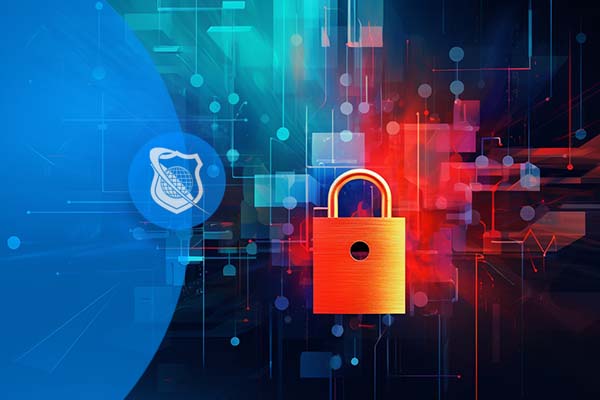What is Multi-Factor Authentication?
Multi-factor Authentication, commonly known as MFA, is a security system that requires more than one method of authentication from independent categories of credentials to verify the user’s identity for a login or other transaction. MFA combines two or more independent credentials: what the user knows (password), what the user has (security token), and what the user is (biometric verification).
The concept of MFA is based on the idea that a malicious actor is unlikely to be able to supply the multiple factors required for access. If one factor is compromised or broken, the attacker still has at least one more barrier to breach before successfully breaking into the target. MFA is commonly referred to as 2FA when it involves only two factors.
MFA is particularly important because it adds an additional layer of protection on top of your username and password. With MFA, even if an attacker manages to learn your password, it is not enough to gain access to your account. They would also need your phone or another physical device, drastically reducing the likelihood of a successful attack.
Information Security Manager Career Path
Propel your career forward and be part of an essential member of any management team as an Information Security Manager. This advanced training series is designed specifically for those want to move up into a management position in the IT field.
What are the Types of Multi-Factor Authentication?
There are generally three recognized types of authentication factors:
- Knowledge Factors: Something the user knows, such as a password or PIN.
- Possession Factors: Something the user has, such as a mobile phone, smart card, or token.
- Inherence Factors: Something the user is, typically a biometric like fingerprints, retina scans, or voice recognition.
Specific Examples Include:
- SMS-based Verification: A code sent to the user’s phone, which they must enter to log in.
- Authenticator Apps: Apps like Google Authenticator or Microsoft Authenticator that generate a time-sensitive code.
- Hardware Tokens: Physical devices like a YubiKey that the user plugs into their computer or taps on a mobile device to authenticate.
- Biometric Verification: Includes fingerprint readers, iris scanners, and facial recognition systems.
- Location Factors: Authentication based on the location from which an access attempt is made, typically used in conjunction with other factors.
- Time Factors: Restricting access attempts to a specific time window, also typically used in conjunction with other factors.
The choice of which MFA method to use typically balances convenience for the user with the level of security required. High-security environments might require multiple factors from different categories, such as a password, a token, and biometric data.
MFA systems are evolving, and new methods are continually being developed and tested to make authentication secure yet user-friendly. It’s a critical component in a comprehensive security strategy, providing an extra layer of defense against the ever-evolving threat landscape.
Information Security Analyst Career Path
An Information Security Analyst plays a pivotal role in safeguarding an organization’s digital infrastructure and sensitive data. This job involves a blend of technical expertise, vigilance, and continuous learning to protect against ever-evolving cyber threats.
Adding MFA To Your Applications
Adding MFA to your website significantly enhances security, and fortunately, there are various programming options and tools you can use to implement it. Here are some of the most popular and effective methods:
- Authenticator Apps (like Google Authenticator or Authy):
- These apps generate time-based, one-time passcodes (TOTP). Libraries like
pyotp in Python can be used to integrate these services into your website. You would need to implement QR code generation for the initial setup and a method to verify the codes.
- SMS and Email-Based Verification:
- Services like Twilio or SendGrid can be used to send one-time codes via SMS or email. You need to securely generate and validate these codes and ensure you handle the transmission securely and promptly.
- Push-Based Authentication (like Duo Security or Pushover):
- These services send a login request to your phone, which you can approve or deny. They are user-friendly and secure, as the authentication request is tied to a physical device. These services usually have SDKs or APIs that you can integrate into your server’s backend.
- Hardware Tokens (like YubiKey):
- Integrating hardware tokens usually involves using a service’s API to validate the token’s response. This might require more in-depth backend work to ensure the tokens are validated securely and efficiently.
- Biometric Authentication:
- If your website can be accessed through mobile apps, integrating biometric authentication (like fingerprint or facial recognition) can be done through the respective native development kits (iOS’s TouchID/FaceID with Swift or Android’s BiometricPrompt with Kotlin/Java).
- WebAuthn/FIDO2:
- This is a standard for passwordless and second-factor authentication. Libraries are available for various programming languages (like
webauthn for Python) that allow users to use biometric devices, mobile phones, or FIDO security keys to authenticate.
- Identity and Access Management (IAM) Services:
- Cloud providers like AWS, Google Cloud, and Azure offer IAM services that can handle MFA. They provide APIs to integrate MFA into your applications and manage user access with various policies.
- Open Source MFA Tools:
- There are also open-source solutions like FreeOTP or privacyIDEA, which can be self-hosted and integrated into your system.
- Integration with Identity Providers (IdP):
- If you’re using an IdP like Okta, Auth0, or OneLogin, they often have built-in MFA solutions that you can integrate into your application. These platforms come with extensive documentation and SDKs to streamline the integration process.
When implementing MFA, it’s crucial to ensure that the method you choose aligns with the security needs of your website and the usability requirements of your users. Proper error handling, fallback mechanisms, and clear user instructions are also key to a successful MFA implementation. Always test thoroughly to ensure the security and functionality of your MFA system before deploying it to your production environment.
Frequently Asked Questions About MFA
What is MFA and why is it important for my online security?
MFA, or Multi-Factor Authentication, is a security system that requires more than one form of verification to prove your identity before granting access to an account or system. It’s crucial for online security as it adds an extra layer of defense, making it significantly harder for unauthorized individuals to access your sensitive information, even if they know your password.
How does MFA protect against phishing or hacking attempts?
MFA protects against these threats by ensuring that even if a hacker obtains one element of your credentials (like your password), they would still need the additional factors—something you have (like your phone) or something you are (like your fingerprint)—to access your account. This makes unauthorized access incredibly challenging.
What types of MFA are considered the most secure?
While all MFA methods enhance security, those that involve biometric verification (like fingerprint or facial recognition) and physical tokens (like a USB security key) are considered highly secure. These methods are directly linked to the user and are difficult to replicate or steal remotely.
Can MFA be used on mobile devices, and how does it work?
Yes, MFA can be and is often used on mobile devices. It can work in several ways, such as through SMS codes sent to your phone, push notifications via an authentication app, or even biometric scans if your device has the necessary hardware. These methods ensure that the person trying to access the account has the authorized mobile device in their possession.
Is MFA foolproof? What should I do if my secondary device or authentication factor is lost or compromised?
While MFA significantly enhances security, no system is entirely foolproof. If your secondary device or authentication factor is lost or compromised, you should immediately report it to your service provider or IT department to revoke its authentication privileges and set up a new authentication factor. Regularly updating your recovery options and keeping backup authentication methods can also mitigate the risk of being locked out of your accounts.












